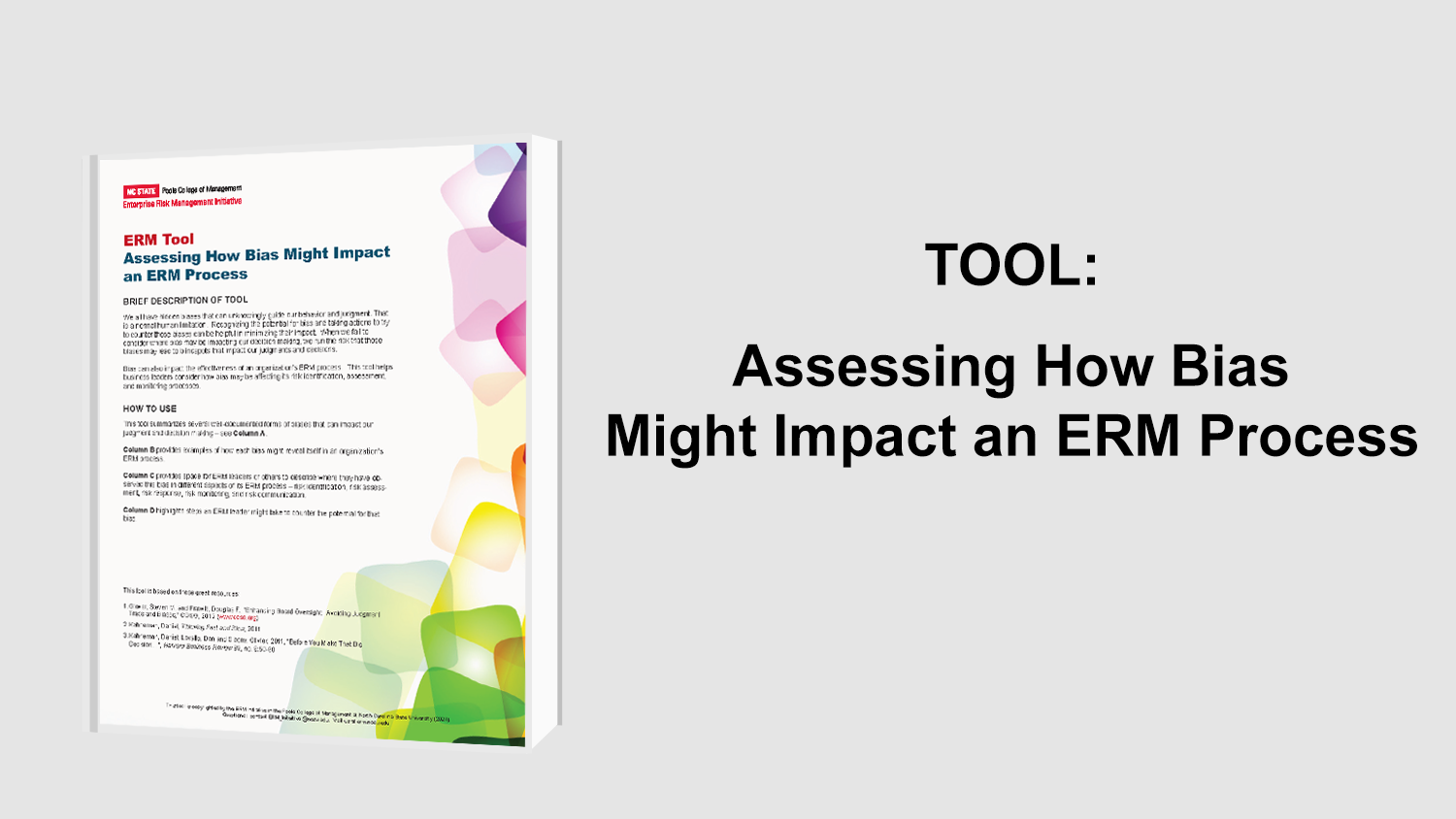Hidden Bias in ERM: A Risk Worth Recognizing
Bias is an invisible influencer—it quietly shapes how we think, feel, and make decisions. While this is simply a part of being human, unrecognized bias can sneak into our judgment, creating blind spots that cloud our vision and lead to flawed conclusions.
When left unchecked, these biases can ripple throughout an organization, especially within its Enterprise Risk Management (ERM) process. That’s why we’ve created a new ERM tool designed to help leaders uncover and address how bias may be affecting risk-related decisions—from identification to communication.
Practical Benefits of This Tool
- Encourages self-awareness among risk leaders and teams
- Promotes a more open, inclusive, and objective risk culture
- Enhances board-level reporting accuracy
- Supports proactive decision-making instead of reactive fixes
Why This ERM Tool Matters
Every ERM process aims to provide a comprehensive and objective view of risks. However, biases can distort this view—whether it’s optimism clouding worst-case scenarios, or confirmation bias causing leaders to dismiss critical but conflicting data. These distortions reduce the accuracy of risk assessments, potentially leaving your organization vulnerable.
To help combat this, our tool introduces a structured, practical approach to identifying bias and offers concrete strategies to mitigate it.
What’s Inside the Bias Assessment ERM Tool
This downloadable PDF resource breaks the concept of bias down into manageable insights using four key columns:
- Types of Biases commonly observed in organizations (e.g., optimism, availability, overconfidence)
- ERM-Specific Examples of how each bias may surface in risk processes
- Self-Assessment Prompts to help identify where these biases may be present within your organization
- Tactical Countermeasures to help ERM leaders reduce or neutralize the influence of bias
How to Use the Tool
Using the tool is straightforward and designed to spark reflection, discussion, and action. Here’s a quick walkthrough:
- Review the Types of Biases listed in Column A.
- Study the ERM Impact Examples in Column B to understand how biases might appear in your own processes.
- Fill in Column C by reflecting on areas in your risk identification, assessment, monitoring, or communication where you’ve seen similar biases at work.
- Implement Suggestions from Column D, which offers tactics like “introducing alternative data sources” or “empowering a devil’s advocate” to challenge assumptions.
This structure ensures the tool is not only diagnostic—but also actionable.
Explore More Risk Management Tools
This downloadable tool is just one of many helpful resources in our growing library. Be sure to explore the rest of our ERM Resource Center for more templates, frameworks, and insights to enhance your risk management strategy.
This tool is based on these great resources:
Glover, Steven M. and Prawitt, Douglas F., “Enhancing Board Oversight: Avoiding Judgment Traps and Biases,” COSO, 2012 (www.coso.org)
Kahneman, Daniel, Thinking Fast and Slow, 2011
Kahneman, Daniel; Lavallo, Dan and Sibony, Olivier, 2011, “Before You Make That Big Decision…”, Harvard Business Review 89, no. 6:50-60
- Categories:
- Types:



